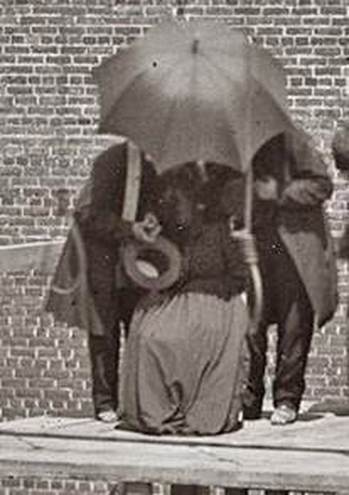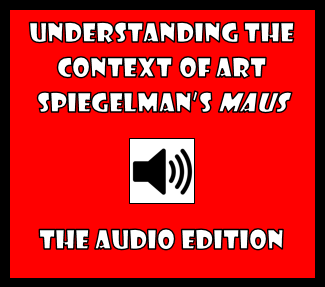|
by Glen Downey, Comics in Education, www.comicsineducation.com They're Thoughtful, They're Visual, and They're Very Pragmatic[A version of this post was originally published in October, 2013 on a WordPress blog I started. I moved the entire contents of that blog to its present location here. It consisted only of this post. You can also read it on medium.com.] This is not a post about comics or graphic novels per se. This is a post about the future of education that is happening right now. Now don’t get me wrong. I’m interested as much as the next person in the present of education. I’ve been to enough conferences and listened to enough keynote speakers to know that the present is pretty interesting. After all, this is the 21st century, and our classrooms are comprised of an exciting new breed of student: the 21st-century learner. I quite like them, in fact. I can’t help but think, though, that much of what is said about the 21st-century learner, despite being well-intentioned, doesn’t always accord with the needs of the 21st-century learner. Now on the surface it seems to. We talk about how these learners have a different “operating system” than learners once did, and are hardwired to inhabit a visual culture of fleeting images and an aural culture of soon-forgotten soundbites. We’re pretty certain, as well, that they need to complement their "superficial" understanding of a broad range of subjects with deeper investigations of the important few. Talking about these things with one another in the office, discussing them at department meetings, and sharing them at conferences all make us feel like we have a handle on 21st-century education… But this is a post about 22nd-century education. Perhaps more accurately, this is a post about the future of education, and about how much or how little we are doing to prepare for it. I was inspired after much procrastination to post this because of something that happened in my class last term. I learned a fundamental truth about the way in which my students deal with the visual world they inhabit. It reconfirmed my belief that the manner in which students negotiate this world must be an essential component of any secondary school curriculum. I think you will see why in a moment. In preparation for a Grade 11 unit on poetry, I gave my students the image below to consider:  What I wanted them to do is to use their facility with visual images to teach themselves how well they could transfer these investigative skills to the study of poetry. I wanted them to find evidence, use context, interpret clues. And they were fabulous. They noted, for example, that the central figure appeared to be a woman, that her dress seemed turn of the (20th) century or older, that the men in the photo were ministering to her, and that the nooses suggested something ominous was about to happen. Then I decided to push them further. I said that I could only begin the poetry unit once they told me who the woman in the photo was, where the photo was taken, and on what day. I teach in a laptop environment, and I allowed the students to use any technology they had at their disposal. How long do you think it took them to discover her identity? Perhaps more pertinently, how many clicks do you think it took them? If you’re imagining a process of keyword and image searches that quickly narrowed things down, with only a few minutes and a handful of clicks required to answer the questions, then you likely understand something about 21st-century learning. If you’re intrigued, surprised, horrified, or delighted by the fact that the answers can be found in two clicks, however, then read on. It took about 30 seconds before a student got up, walked over to me holding his phone, and read off his litany of responses: “It’s Mary Surratt, sir, And the photo was taken on July 7, 1865 in Washington, DC. She’s about to be hanged for the Lincoln Assassination.” “But…how…?” I asked. I mean, it was only 30 seconds after I set them the task. “Google Goggles, sir. Just took a picture of the image with my phone and the app compared it with the images in the Google Database. Then I just clicked on the link that came up.” That’s right: two clicks. I have a feeling, then, that just as we're beginning to get a handle on 21st-century education, the next century has already begun. Apparently, we needed to begin getting ready for this back in the '50s or something, So although this site will usually focus on the use of comics and graphic novels in the classroom and their wider applications (in visual brainstorming, in recognizing similarities and differences between literary forms, genres, etc.), I still want to hear from educators, students, and parents about where we we need to go in educating today's learners. I want to know how we can transform the real and virtual spaces in which our students learn and break out of the traditional environments we’ve inherited in order to produce the next generation of learners… Well, the next after the next, anyway.
0 Comments
Your comment will be posted after it is approved.
Leave a Reply. |
Glen DowneyDr. Glen Downey is an award-winning children's author, educator, and academic from Oakville, Ontario. He works as a children's writer for Rubicon Publishing, a reviewer for PW Comics World, an editor for the Sequart Organization, and serves as the Chair of English and Drama at The York School in Toronto. If you've found this site useful and would like to donate to Comics in Education, we'd really appreciate the support!
Archives
February 2019
|




 RSS Feed
RSS Feed
